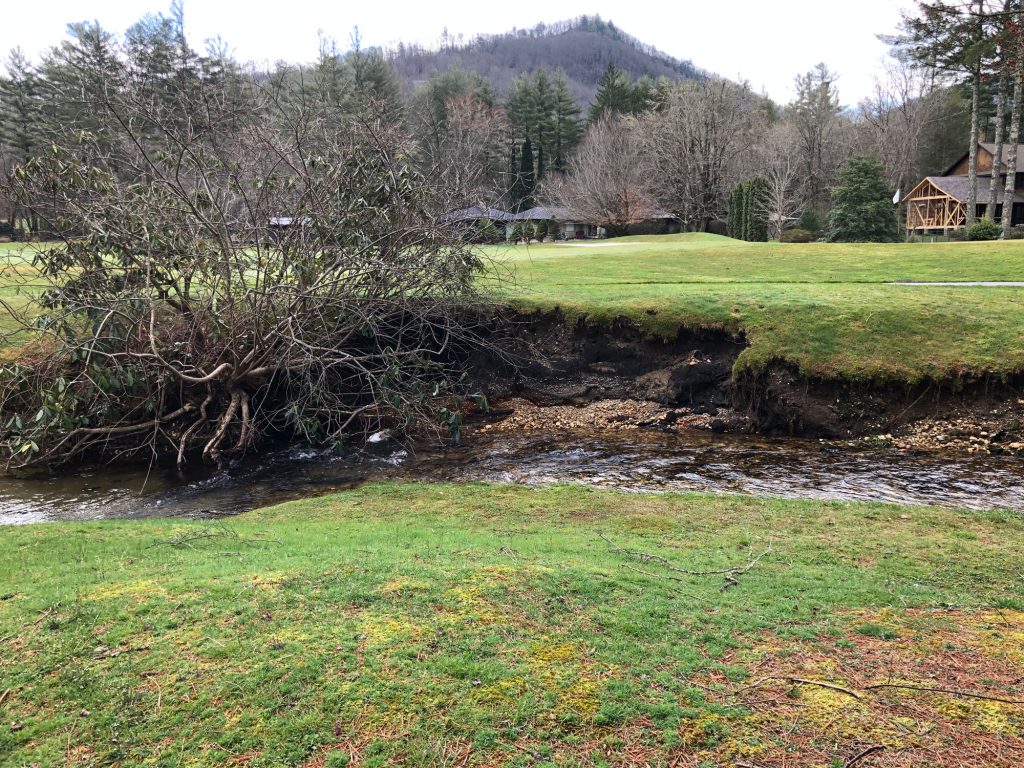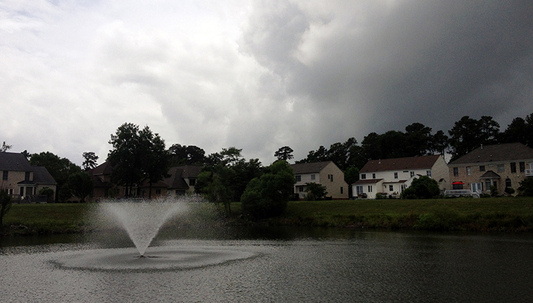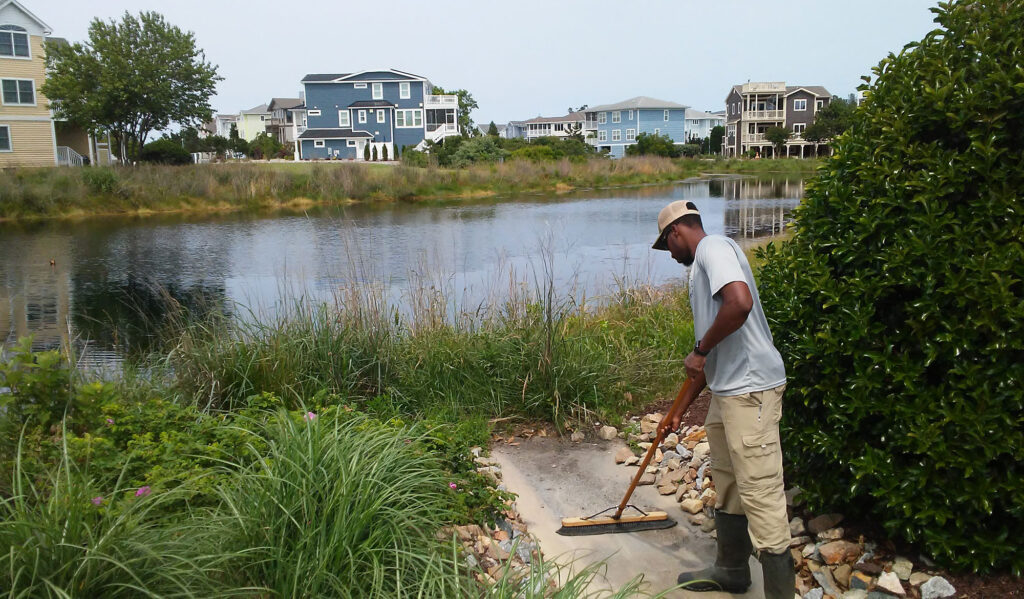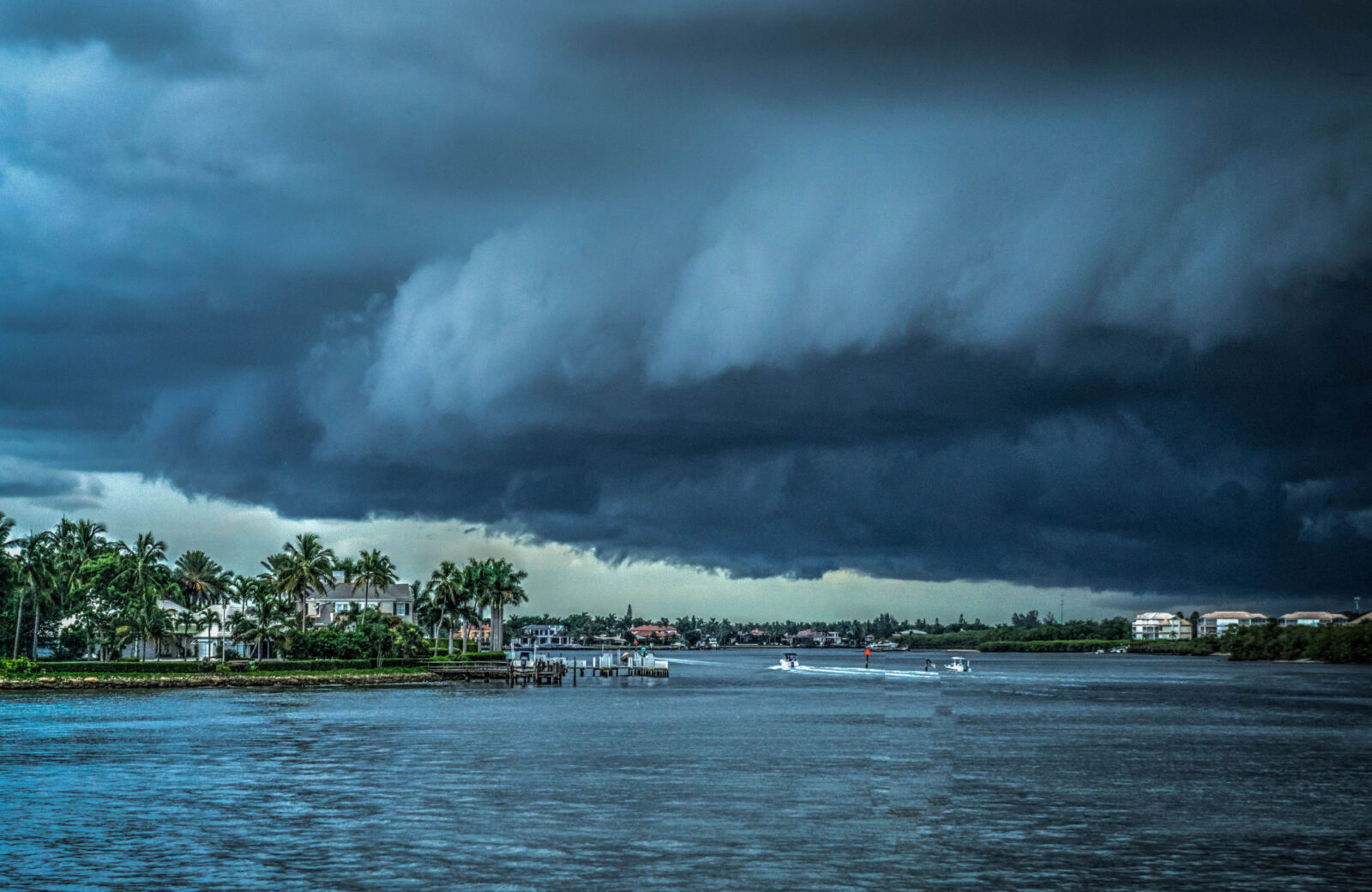
What Happens to Your Lake After a Hurricane?
Tropical storms and hurricanes pose a severe threat to public safety and vital community infrastructure. Heavy winds and rain may down trees and utility poles, rip off building roofs and siding, and leave debris strewn across roads. However, one form of infrastructure that’s heavily impacted but often overlooked is community ponds. Lakes and ponds are invaluable resources used for stormwater collection, recreational activities, and connection with nature. But aquatic ecosystems are very sensitive to change and can become imbalanced in the wake of a disaster. In order to maintain the health and functionality of these vital resources, it’s important to understand the changes that may occur, and key ways to protect and restore them after the storm has passed.
The Effects of Strong Wind & Heavy Rains
One of the primary effects of a hurricane is heavy rainfall, which can cause the water level in a pond to rise rapidly. This may lead to flooding and subsequent erosion of the surrounding areas, drawing sediment into the waterbody. In the short term, this influx of sediment can increase the turbidity of the water, reducing clarity and aesthetics. In the long term, erosion can lead to the development of bottom muck that reduces overall depth and volume – intensifying the flooding during the next storm.
Hurricanes can also cause rapid changes in water temperature. A storm’s high winds and heavy rainfall may cause the warm surface of the pond to mix with cooler deep water. This sudden change in temperature can stress fish and other aquatic organisms, impairing the natural food chain within the ecosystem. It is not uncommon to witness a fish kill following a large storm.
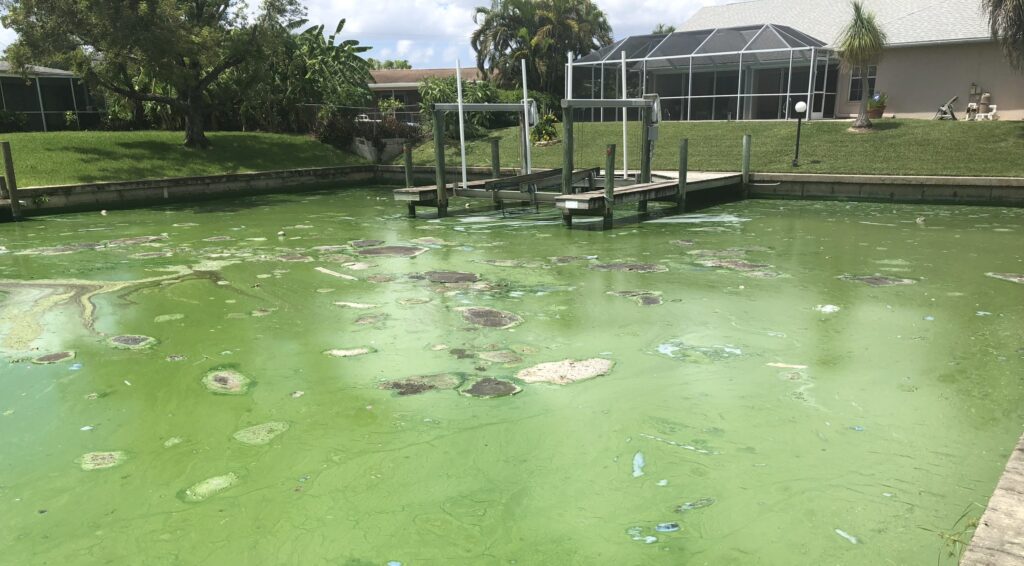
How Nutrient-Rich Stormwater Runoff Impacts Your Water
Along with causing shoreline deterioration, heavy rainfall and flooding can bring nutrients such as nitrogen and phosphorus from the surrounding areas into the pond. These may be in the form of debris like yard waste, trash, and animal waste, or through runoff containing fertilizers, motor oil, cleaning detergents, and agricultural pesticides. In the days and weeks following the storm, these nutrients can stimulate nuisance pond weeds and algae, which may initiate a cycle of growth, die-off, and decay that further elevates nutrient levels over time. This process called eutrophication can deplete dissolved oxygen (DO) levels and prompt other changes in water chemistry, such as salinity, alkalinity, conductivity, and pH.
Harsh Weather Can Damage Lake Equipment
Finally, severe weather events are known to cause significant damage to fountains and surface aerators, as well as stormwater infrastructure, further escalating flooding risks at times when stormwater collection is needed most. Fountains and aeration are essential tools to help rapidly restore balance to aquatic ecosystems after a storm, and loss of functionality can significantly hinder the restoration process.
Overall, storms and hurricanes can have a significant negative impact on the water quality conditions and physical characteristics of your pond, and these effects can persist for weeks, months, or even years if not addressed. Though these weather events are inevitable, property owners and managers can take action before and after a storm to protect and preserve their water resources.
The National Hurricane Center states that hurricane season runs from June 1 to November 31, with storm events peaking between August and October.
Before the storm arrives, the following steps should be taken:
Step 1: Clear debris
Clearing debris such as plastic bags, bottles, leaves, yard debris, and other blockages is essential to help prevent clogging in stormwater structures, which can lead to severe flooding.
Step 2: Turn off fountains and aerators
To avoid damage to electrical equipment during a storm, professionals recommend turning off and removing fountains or aerators from the water.
Step 3: Secure equipment
To protect your property, ensure safety, and provide peace of mind, secure any outdoor equipment such as boats and kayaks, patio furniture, lawn chairs, fish feeders, and toys.
After the storm has passed, the following steps should be taken:
Step 1: Clear post-storm debris
Heavy winds and rain can drive trash and debris into vital stormwater structures, impeding the drainage process. When it is safe to do so, removing and disposing of any accumulated material allows water to flow more freely into stormwater pond structures.
Step 2: Resume fountain and aeration functions
Resuming fountain and aeration functions can help restore the natural balance of the ecosystem by circulating and oxygenating the waterbody.
Step 3: Schedule a post-storm inspection
During a stormwater inspection, professionals will conduct water quality testing, evaluate the pond’s physical condition, identify damage to inlet and outlet structures, and keep an eye out for any invasive species that were displaced by the storm.
Step 4: Repair the shoreline
Once a shoreline is damaged, the deterioration may continue to accelerate if it is not addressed promptly. Professionals can use bioengineering techniques to completely rebuild the shoreline, and introduce native buffer vegetation around the perimeter for added stability during the next weather event.
Protect Your Waterbody from the Next Storm
Storms and hurricanes can have a significant impact on the health and functionality of ponds, but when these events occur, the safety of loved ones takes precedence. Having a step-by-step process in place for pre- and post-storm maintenance can mitigate damage and allow property owners and managers to focus on the people who matter most. Rebuilding is a natural and expected process following a natural disaster; however, lakes and ponds should not become an added burden during such a stressful time. As part of an Annual Management Program, stakeholders can rest assured that a professional is keeping a watchful eye on their waterbodies all through hurricane season.
Ready to design your custom Annual Management Program? Speak with an expert today.
SOLitude Lake Management is a nationwide environmental firm committed to providing sustainable solutions that improve water quality, enhance beauty and preserve natural resources.
SOLitude’s team of aquatic scientists specializes in the development and execution of customized lake, stormwater pond, wetland and fisheries management programs. Services include water quality testing and restoration, algae and aquatic weed control, installation and maintenance of fountains and aeration systems, shoreline erosion control, muck and sediment removal and invasive species management. SOLitude partners with homeowners associations, golf courses, private landowners, businesses and municipalities. SOLitude Lake Management is part of Rentokil, a leading business services company, operating across the United States, Canada and Puerto Rico.
For more information, visit SOLitude Lake Management at solitudelakemanagement.com, and connect on Facebook, LinkedIn and Twitter.








